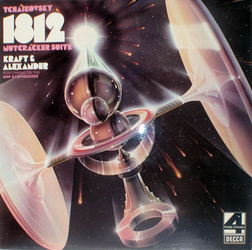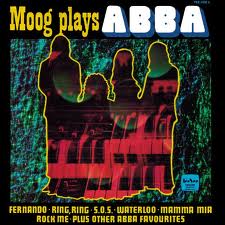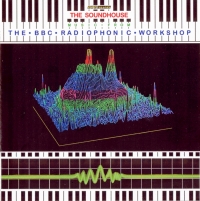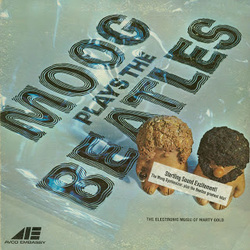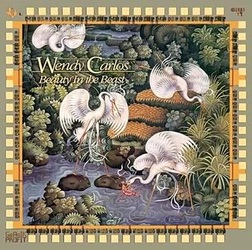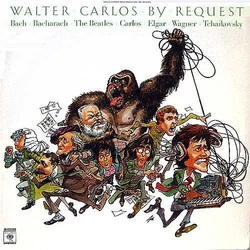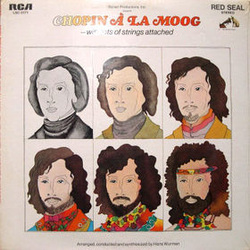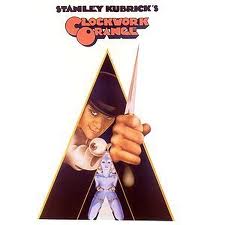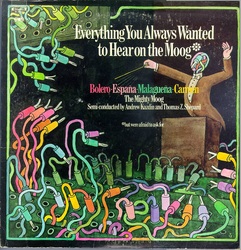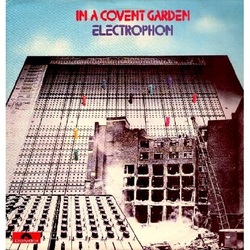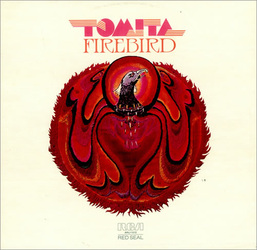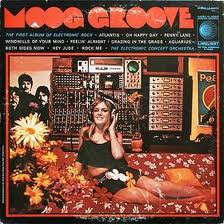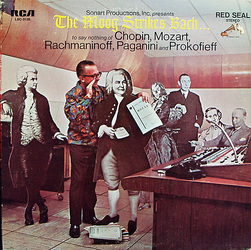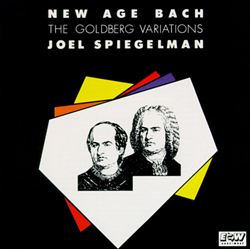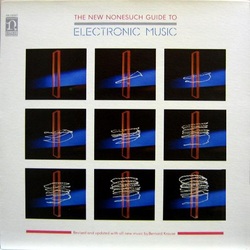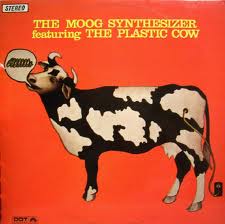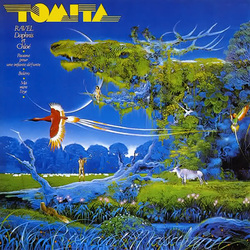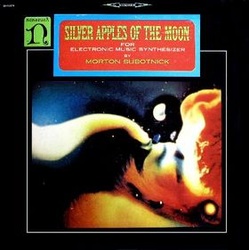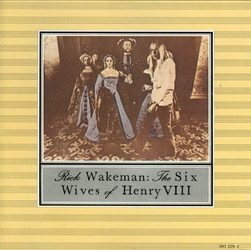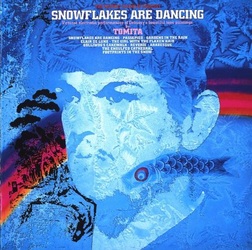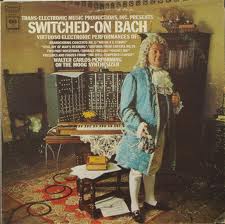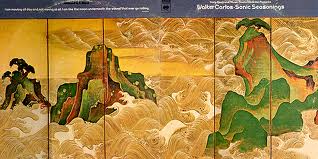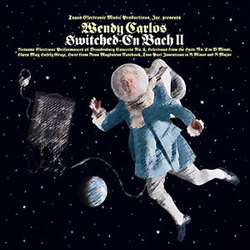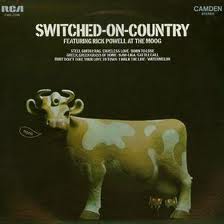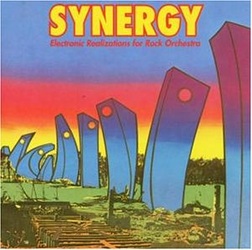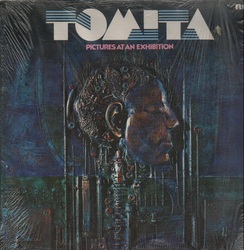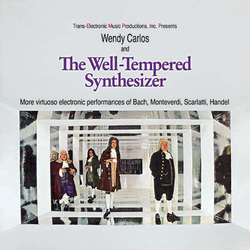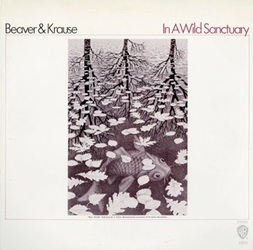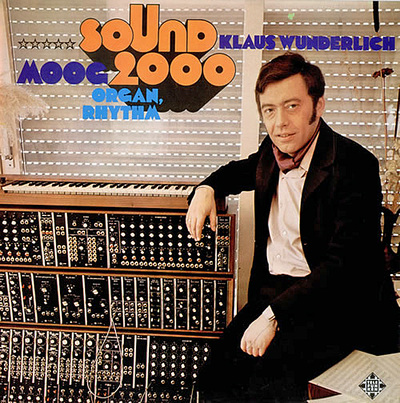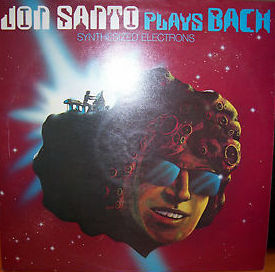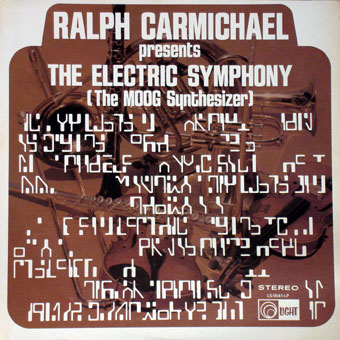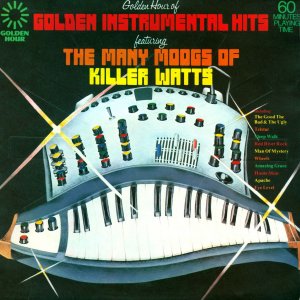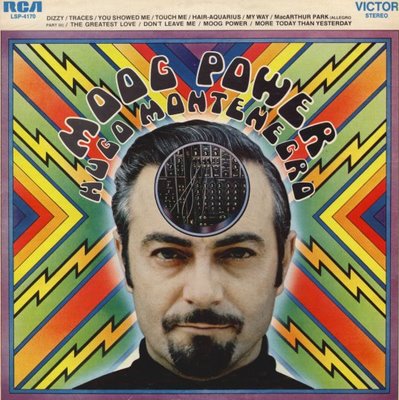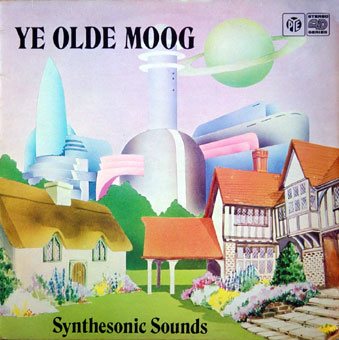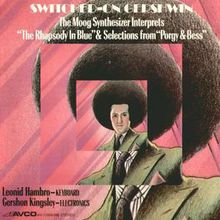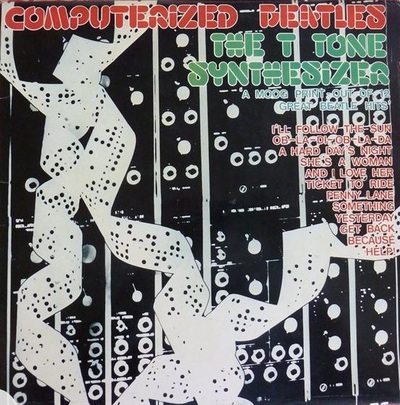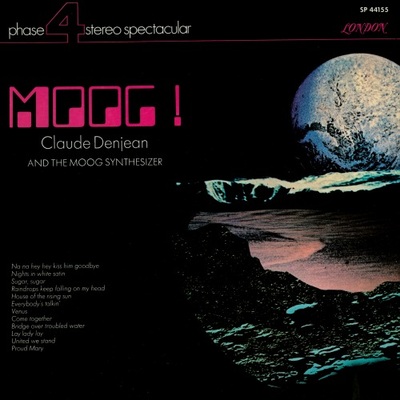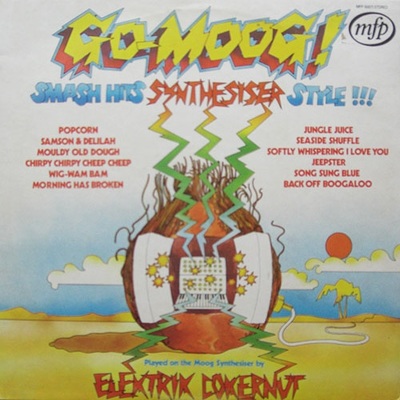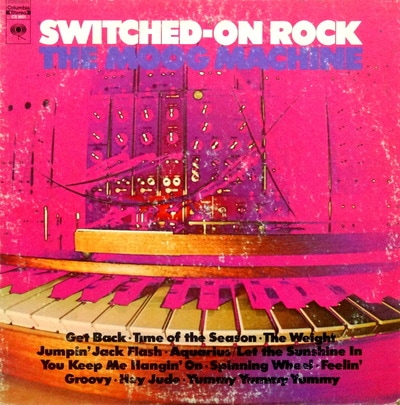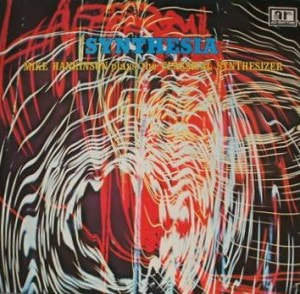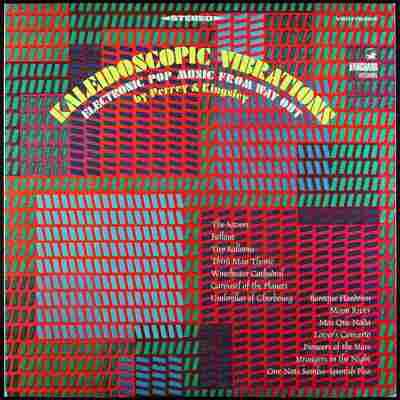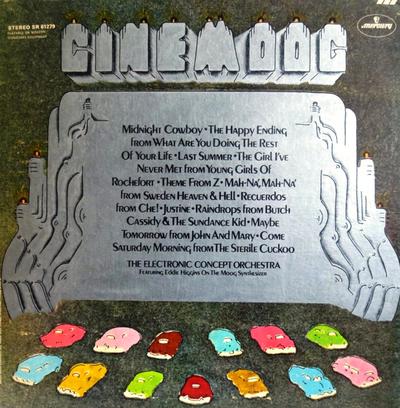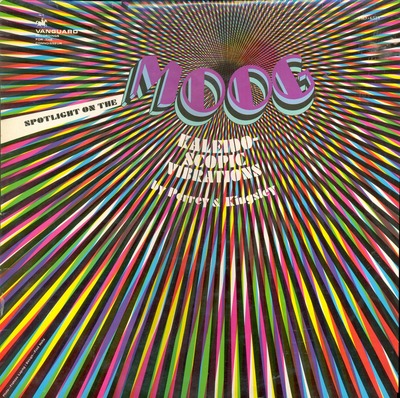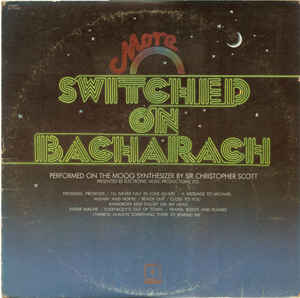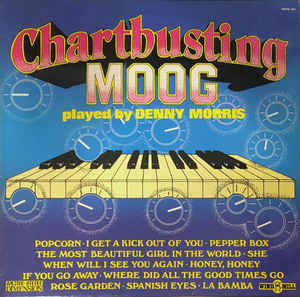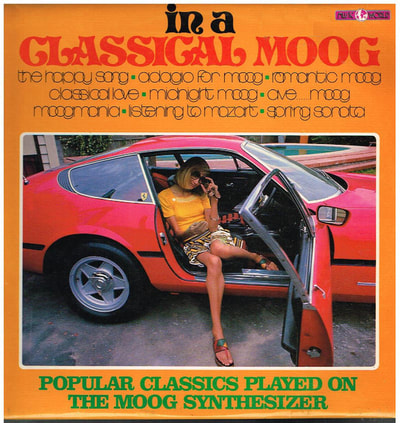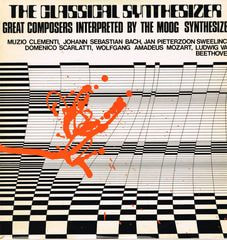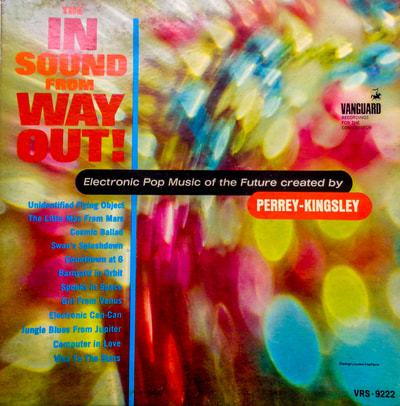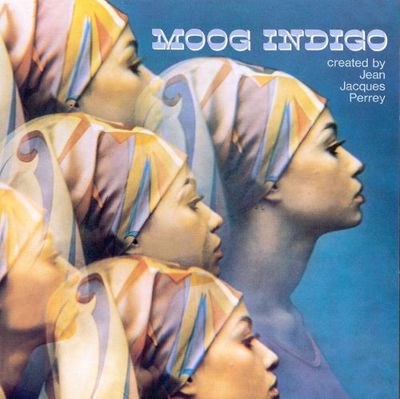Synthesis
Moog LPs
Soon after Switched on Bach came out in 1968 it was soon followed with other Moog albums. Many of these were just trying to cash in on the new electronic sounds, but there were also some serious attempts to make music, rather than just titilate ears with the new sounds. These are the ones in my record collection, but there were many more. Incidentally, not all recordings were done on a Moog; some artists used an ARP synthesiser (usually the model 2600).
I'm in the mood for Moog
Here is a list of some other worthwhile Moog albums. Thanks to the Internet, you can listen to almost every track. Most are either on Spotify or Grooveshark (as indicated), with Gershon Kingsley's "Music to Moog By" on Youtube.
Moog: The Electric Eclectics of Dick Hyman
featuring "The Minotaur" (which inspired Emerson's "Lucky Man" solo)
Grooveshark
Music to Moog By - Gershon Kingsley (Popcorn on Grooveshark)
Written by GK, it was Hot Butter who scored a big hit with this piece.
http://www.youtube.com/user/gintautas1982/videos
Claude Denjean - Moods (1977)
Douglas Leedy - Entropical Paradise (1968)
Spotify
Morton Subotnick - Until Spring (1976)
Spotify
Switched on Beatles - new world electronic chamber ensemble
Tomita - Bolero
Grooveshark
The Happy Moog - Jean Jacques Perrey and Harry Breuer
Spotify
Moog Rock - Les Baxter
Grooveshark
Dana Countryman - Moog-Tastic: Electronic Melodies from the 24th Century
Grooveshark
Ye Olde Space Bande - The Moog Cookbook (1997)
Grooveshark
Sid Bass - Moog Espana
Spotify
Links:
Thom Holmes has put together his list of the Top Ten Moog Albums of 1970
Zeke has done The magical, marvelous Moog, which is a very comprehensive list of Moog albums.
Olivier Grall has a page showing many Moog albums.
The Moog Foundation has a list of recordings that used a Moog synthesiser, arranged chronologically.
Moog: The Electric Eclectics of Dick Hyman
featuring "The Minotaur" (which inspired Emerson's "Lucky Man" solo)
Grooveshark
Music to Moog By - Gershon Kingsley (Popcorn on Grooveshark)
Written by GK, it was Hot Butter who scored a big hit with this piece.
http://www.youtube.com/user/gintautas1982/videos
Claude Denjean - Moods (1977)
Douglas Leedy - Entropical Paradise (1968)
Spotify
Morton Subotnick - Until Spring (1976)
Spotify
Switched on Beatles - new world electronic chamber ensemble
Tomita - Bolero
Grooveshark
The Happy Moog - Jean Jacques Perrey and Harry Breuer
Spotify
Moog Rock - Les Baxter
Grooveshark
Dana Countryman - Moog-Tastic: Electronic Melodies from the 24th Century
Grooveshark
Ye Olde Space Bande - The Moog Cookbook (1997)
Grooveshark
Sid Bass - Moog Espana
Spotify
Links:
Thom Holmes has put together his list of the Top Ten Moog Albums of 1970
Zeke has done The magical, marvelous Moog, which is a very comprehensive list of Moog albums.
Olivier Grall has a page showing many Moog albums.
The Moog Foundation has a list of recordings that used a Moog synthesiser, arranged chronologically.
Intro to Synthesis videos
These video tutorials featuring Dean Friedman from the New York School of Synthesis were made in the 1980s. Each is 1 hour long.
Intro to Synthesis Part 1 - The Building Blocks of Sound & Synthesis
Intro to Synthesis Part 2 - Types of Synthesis & Programming Examples
Intro to Synthesis Part 3 - Additional Synth Features, Performance Controls & Wrap Up
Intro to Synthesis Part 1 - The Building Blocks of Sound & Synthesis
Intro to Synthesis Part 2 - Types of Synthesis & Programming Examples
Intro to Synthesis Part 3 - Additional Synth Features, Performance Controls & Wrap Up
History of Synthesis videos
There are several very good documentaries on the history of electronic music on Youtube:
The Story of the RCA synthesiser (2012) - The RCA synthesiser predates Bob Moog's Voltage Controlled design. The Mark I was unveiled in 1955 and the more famous Mark II in 1957 where it was leased to a joint venture between the Columbia and Princeton universities. With the possible exception of Hugh Le Caine's Electronic Sackbut (which was developed in the 1940s), the RCA is the first proper synthesiser as we understand the term today. It had proper control over all aspects of the sound (ie waveform, envelope, timbre, and modulation) as well as sequencing. There was no keyboard (in fact there was no way of playing it in realtime at all).
You can hear various pieces of music made on the RCA synthesiser here.
Alchemists of Sound (2003) - this is the history of the BBC Radiophonic (sadly it was gone by the time I was at the Beeb in 1999)
Synth Britannia (2009) - the development of using synthesisers in pop music (focusing mostly on the new wave synth bands of the 80s)
Modulations (1998) - the history of electronic dance music
High Tech Soul: The Creation of Techno Music (2006) - the evolution of Detroit techno
The Museum of Synthesizer Technology 1 (this is in the UK and opened in 1994)
The Museum of Synthesizer Technology 2 (a final look-around - lots of cools synths, but the lighting is poor)
Moog: A Film by Hans Fjellestad (2004)
What the Future Sounded Like (2006) - the history of electronic music in Britain (particularly EMS)
Krautrock - The Rebirth of Germany (2009)
Prog Rock Britannia - an Observation in Three Movements (2008)
The New Sound Of Music (part 1) (1979)
The New Sound Of Music (part 2)
The New Sound Of Music (part 3)
The New Sound Of Music (part 4)
Sadly, there is no doco on Wendy Carlos. The was an interview done in 2007. You can find it here.
Here are some more that are related:
Theremin - An Electronic Odyssey (1994)
Babbitt: Portrait of a Serial Composer (2010)
Edgard Varese - The one all alone (2005)
Peefeeyatko - Frank Zappa Documentary (1991)
Tuning In - Karlheinz Stockhausen (1981)
Daphne Oram documentary - Wee Have Also Sound-Houses (2008)
Early BBC radiophonics: Private Dreams and Public Nightmares (1957)
Delia Derbyshire - Sculptress of Sound (7 parts) (2010)
Eliane Radigue - IMA Portrait documentary
Philip Glass - Music with Roots in the Aether (1987), and The Music of Philip Glass (1975)
Glass - A Portrait of Philip In Twelve Parts (part 1) (2007)
Glass - A Portrait of Philip In Twelve Parts (part 2)
Waveshaper Media documentaries: I Dream of Wires (2014) - the history of the modular synthesizer.
The Story of the RCA synthesiser (2012) - The RCA synthesiser predates Bob Moog's Voltage Controlled design. The Mark I was unveiled in 1955 and the more famous Mark II in 1957 where it was leased to a joint venture between the Columbia and Princeton universities. With the possible exception of Hugh Le Caine's Electronic Sackbut (which was developed in the 1940s), the RCA is the first proper synthesiser as we understand the term today. It had proper control over all aspects of the sound (ie waveform, envelope, timbre, and modulation) as well as sequencing. There was no keyboard (in fact there was no way of playing it in realtime at all).
You can hear various pieces of music made on the RCA synthesiser here.
Alchemists of Sound (2003) - this is the history of the BBC Radiophonic (sadly it was gone by the time I was at the Beeb in 1999)
Synth Britannia (2009) - the development of using synthesisers in pop music (focusing mostly on the new wave synth bands of the 80s)
Modulations (1998) - the history of electronic dance music
High Tech Soul: The Creation of Techno Music (2006) - the evolution of Detroit techno
The Museum of Synthesizer Technology 1 (this is in the UK and opened in 1994)
The Museum of Synthesizer Technology 2 (a final look-around - lots of cools synths, but the lighting is poor)
Moog: A Film by Hans Fjellestad (2004)
What the Future Sounded Like (2006) - the history of electronic music in Britain (particularly EMS)
Krautrock - The Rebirth of Germany (2009)
Prog Rock Britannia - an Observation in Three Movements (2008)
The New Sound Of Music (part 1) (1979)
The New Sound Of Music (part 2)
The New Sound Of Music (part 3)
The New Sound Of Music (part 4)
Sadly, there is no doco on Wendy Carlos. The was an interview done in 2007. You can find it here.
Here are some more that are related:
Theremin - An Electronic Odyssey (1994)
Babbitt: Portrait of a Serial Composer (2010)
Edgard Varese - The one all alone (2005)
Peefeeyatko - Frank Zappa Documentary (1991)
Tuning In - Karlheinz Stockhausen (1981)
Daphne Oram documentary - Wee Have Also Sound-Houses (2008)
Early BBC radiophonics: Private Dreams and Public Nightmares (1957)
Delia Derbyshire - Sculptress of Sound (7 parts) (2010)
Eliane Radigue - IMA Portrait documentary
Philip Glass - Music with Roots in the Aether (1987), and The Music of Philip Glass (1975)
Glass - A Portrait of Philip In Twelve Parts (part 1) (2007)
Glass - A Portrait of Philip In Twelve Parts (part 2)
Waveshaper Media documentaries: I Dream of Wires (2014) - the history of the modular synthesizer.
JP8080
This synth has a rather interesting arrangement for its MIDI inputs. There are two of these, but they are not identical. Nor are they consecutive MIDI ports, as is the case on some synths (ie where MIDI IN 1 addresses parts 1-16 and MIDI IN 2 addresses parts 17-32).
The input designated MIDI IN is used to address the JP8080 parts as per the corresponding part channel selections. The other input is named REMOTE KBD IN and adds extra functionality. Only when using this input are these features active: playback of arpeggios, record & playback of RPS (one note) patterns, recording of controller messages.
The input designated MIDI IN is used to address the JP8080 parts as per the corresponding part channel selections. The other input is named REMOTE KBD IN and adds extra functionality. Only when using this input are these features active: playback of arpeggios, record & playback of RPS (one note) patterns, recording of controller messages.
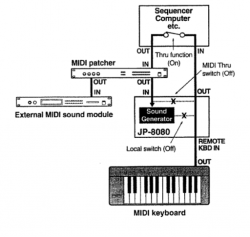
Here is a diagram of how to configure the JP8080 using a keyboard connected to the REMOTE KBD IN port. For this type of setup MIDI THRU is switched off. Local should also be switched to off. MIDI signals will be routed through to the MIDI OUT port, to the sequencer, then return to the JP8080 via MIDI IN. The REMOTE KBD IN channel number can be selected independently to the part channel affected by MIDI IN.
TAL VSTi
Togu Audio Line has some great VST softsynths that mimic analogue synths (as well as some FX plugins too), and best of all they are free. Several are also available on AU format. Click here for the website.
